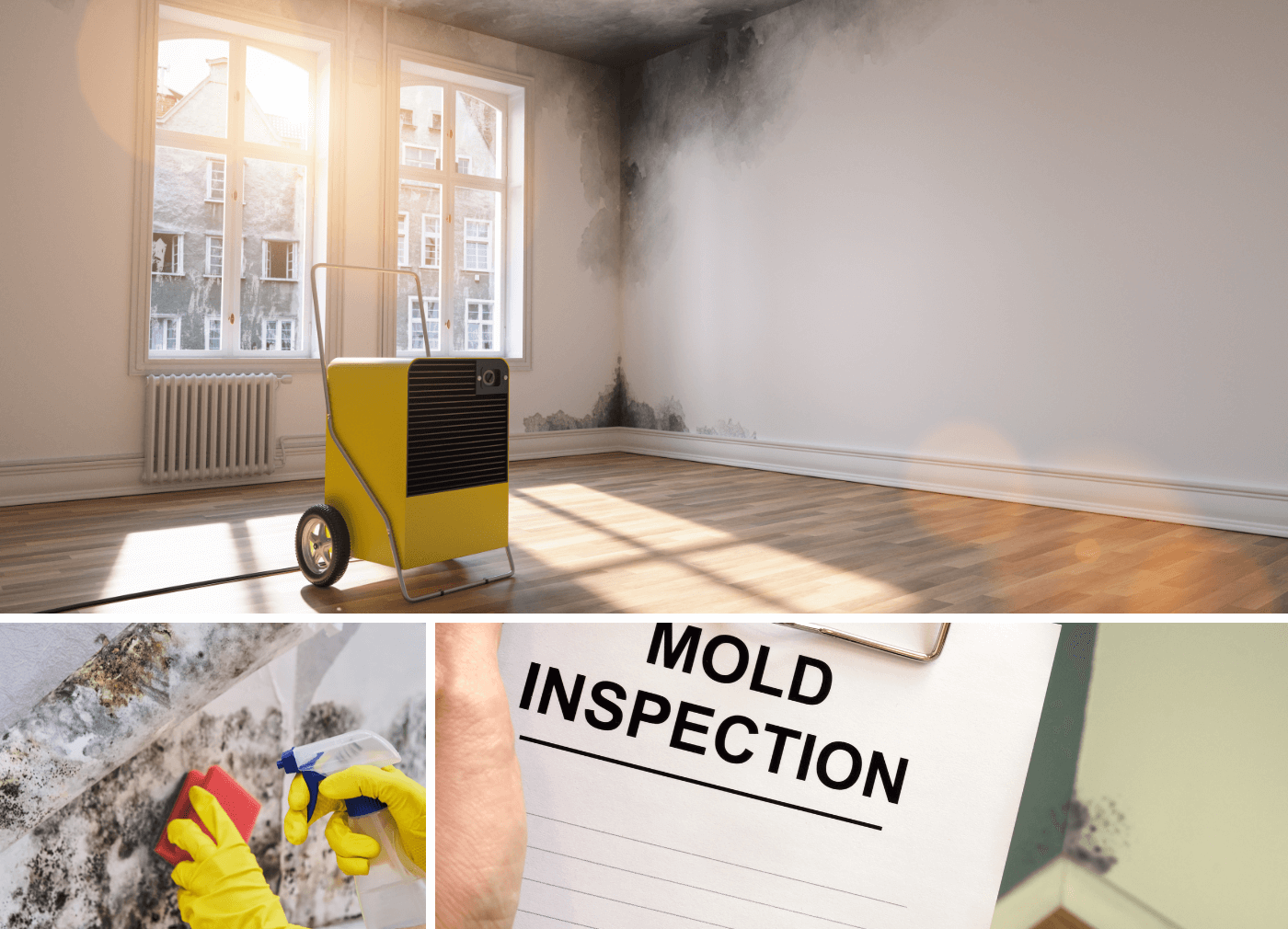Mold is a common problem that can occur in any home or building. It is a type of fungus that grows in damp and humid environments, and can cause a variety of health issues if left untreated. That’s why it’s important to have a mold inspection done if you suspect there may be mold in your home. In this article, we’ll discuss the importance of mold inspection and why it’s necessary for the health and safety of your family.
Indoor air quality plays a crucial role in maintaining a healthy living environment. One of the often-overlooked factors affecting air quality is the presence of mold. Mold can lurk in various corners of your home, impacting not only the air you breathe but also your overall well-being. In this article, we delve into the fundamentals of mold inspection and testing, providing you with valuable insights on how to ensure the air you breathe is clean and safe.
What is Mold Inspection?
Mold inspection is the process of finding and evaluating mold in a building. This method involves looking carefully at the premises, taking samples of the air and surfaces to identify the type and amount of mold. A skilled mold surveyor also checks for signs of water damage or high humidity that could be causing mold to grow.
The Importance of Early Detection
One of the main reasons why mold inspection is so important is because it allows for early detection and prevention of mold growth. Mold can start to grow within 24-48 hours of a water damage event, such as a flood or leak. By catching mold growth early on, you can prevent it from spreading and causing further damage to your home.
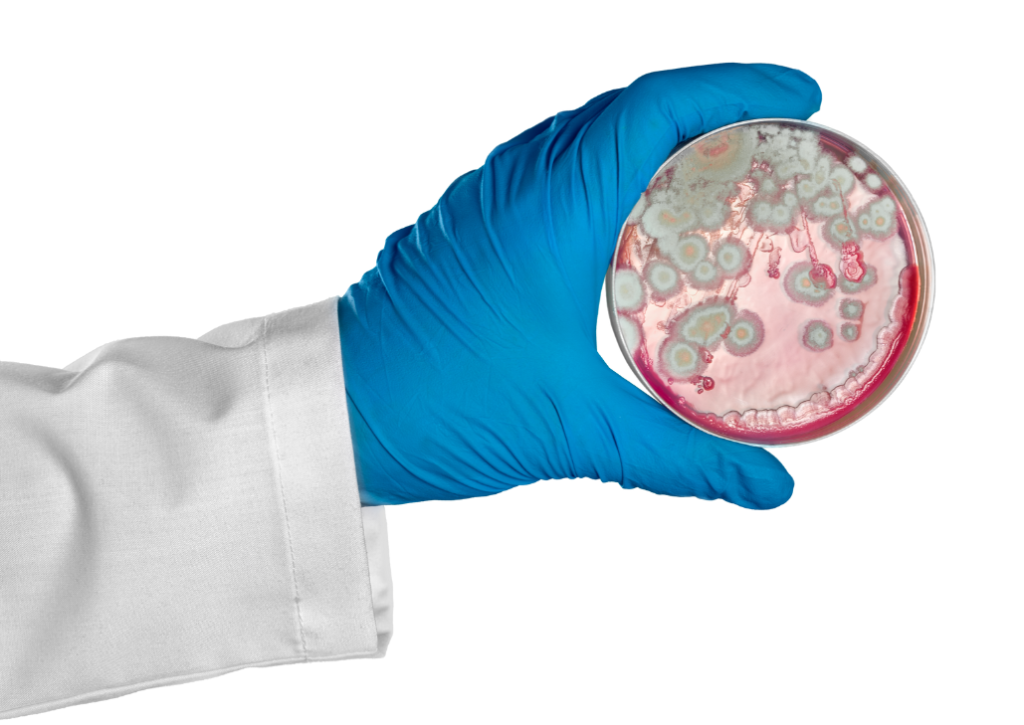
Early detection is also crucial for the health of your family. The longer mold is left untreated, the more it can spread and release harmful spores into the air. This can lead to more severe health issues and a higher risk of mycotoxin exposure.
Why Mold Inspection and Testing Matters:
Mold inspection and testing are essential steps in identifying and addressing potential mold issues in your home. These processes involve assessing the indoor environment for mold growth, identifying the type of mold present, and determining the extent of contamination. The significance of mold inspection and testing lies in its ability to uncover hidden mold, assess air quality, and guide effective remediation efforts.
When Should You Get a Mold Inspection?
There are a few situations where it’s important to get a mold inspection done:
1. After a water damage event: If your home has experienced a flood, leak, or other water damage event, it’s important to get a mold inspection done as soon as possible. Even if the water has been cleaned up, there may still be hidden moisture that can lead to mold growth.
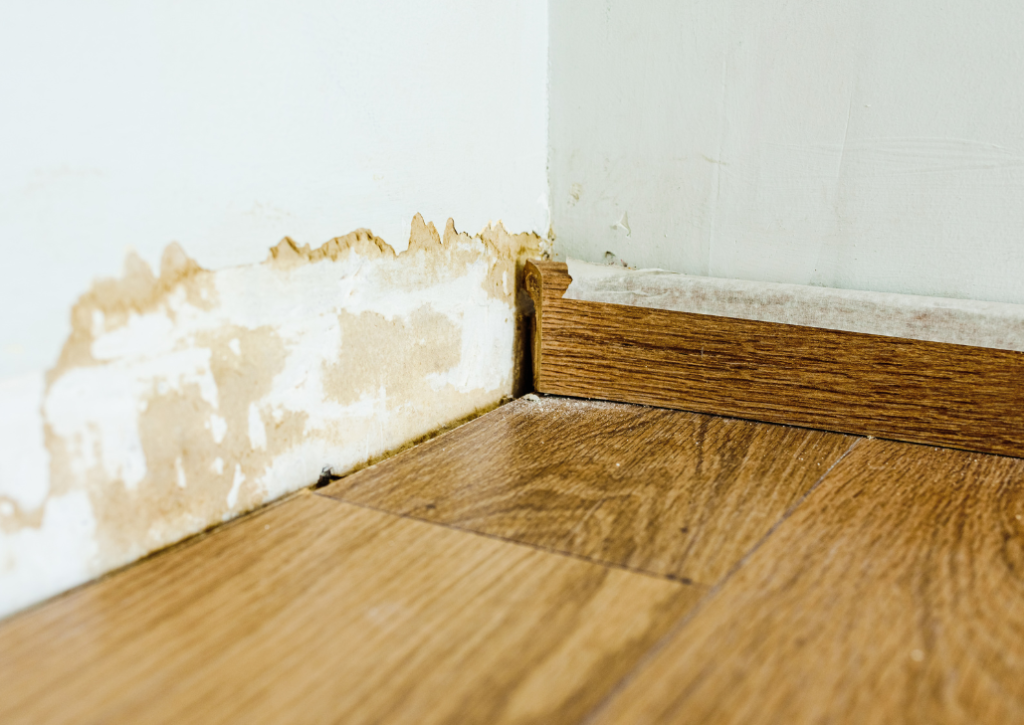
2. If you notice a musty smell: Mold has a distinct musty odor, so if you notice this smell in your home, it’s a good idea to get a mold inspection done. This could be a sign of hidden mold growth.
3. If you or your family members are experiencing health issues: If you or your family members are experiencing symptoms like coughing, sneezing, or difficulty breathing, it’s possible that mold could be the culprit. A mold inspection can help identify the source of the problem and allow for proper remediation.
4. Before buying a home: It’s always a good idea to get a mold inspection done before buying or selling a home. This can help identify any potential mold issues and allow for proper remediation before the sale is finalized.
Mold Inspection: A Step-by-Step Guide
When it comes to maintaining a healthy living space, understanding the intricacies of mold inspection is paramount. Years of experience have taught us that an in-person inspection is the crucial first step in identifying and addressing potential mold issues. Let’s delve into the key components of a comprehensive mold inspection.
- Visual Inspection:
The process begins with a meticulous visual inspection that covers both the exterior and interior of your home. An experienced Mold specialist should examine the landscape around your home, ensuring it is not graded toward the structure, which could lead to water accumulation in the basement or crawlspace.
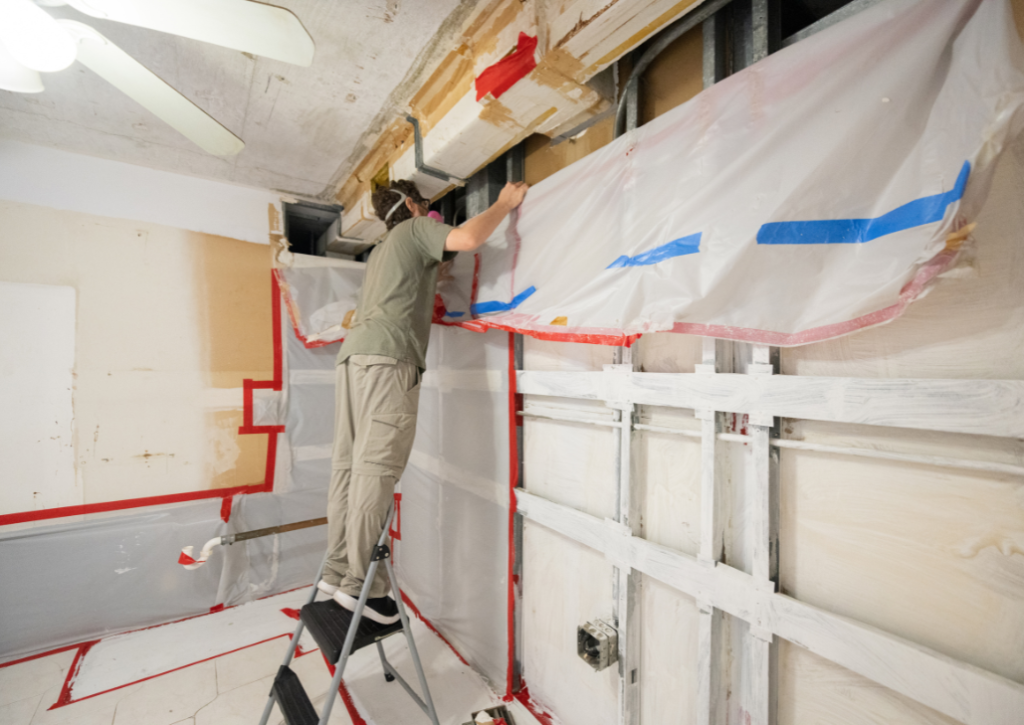
The Mold specialist should explore the roof, attic, basement, and crawl spaces, conducting a hands-on assessment to detect signs of water intrusion and mold. Stains on the ceiling may indicate water damage, while the inspector actively seeks out visible mold. To gauge humidity levels, a high-quality hygrometer is employed, and temperature guns help identify thermal cold spots on walls, potentially signaling issues behind the surface.
- Spore Trap & Tape Testing:
For a more detailed analysis, the inspector may recommend spore trap testing, both inside and outside the home. Comparing spore counts inside and outside helps assess the indoor air quality, with a guideline that counts within the home should be at least 50% lower than those outside.
However, it’s crucial to acknowledge the limitations of spore traps. Not all molds are airborne, and some, like Stachybotrys, may not be adequately represented. Tape testing, another common practice, aids in identifying mold residues in building materials, offering valuable insights into the type of mold present.
Important Note: While some homeowners consider DIY mold testing kits, these may lack standardization in results. Professional mold testing is recommended for accurate assessments, as consumer tests may not reliably detect significant mold issues.
- Environmental Mycotoxin Tests:
The crux of mold exposure often lies in the mycotoxins produced. An environmental mycotoxin test that assesses four major families of mycotoxins. Samples are collected from the air handler filter or furnace ducts and then analyzed for these mycotoxins.
Even in homes without visible mold, a positive environmental mycotoxin test can indicate hidden mold, past remediated mold, or mycotoxins transferred on belongings from elsewhere. Since these mycotoxins can be blown into any room via vents, it’s a crucial indicator of potential exposure.
In conclusion, a comprehensive mold inspection involves visual assessments, spore trap testing, and environmental mycotoxin tests. These steps, when performed by a certified professional, offer a thorough understanding of mold issues in your home, ensuring a healthier living environment for you and your family.
Common FAQs About Mold Inspection:
- Can you test the air in your house for mold?
Yes, testing the air in your house for mold is a crucial step in identifying potential mold problems. Air sampling helps determine the concentration of mold spores in the indoor environment, providing valuable information about air quality.
- How can I test for mold in my house?
You can test for mold in your house by using various methods, including air sampling, surface sampling, and bulk sampling. While DIY kits are available, it’s often advisable to seek professional assistance for accurate and comprehensive testing.
- How do you assess mold in the indoor environment?
Assessing mold in the indoor environment involves a thorough inspection by certified professionals. They examine visible mold, use specialized equipment for air sampling, and may perform surface sampling to identify the type and extent of mold growth.
- How do you test for mold exposure?
Testing for mold exposure typically involves medical assessments, such as blood tests or skin tests, to identify specific mold-related antibodies. However, it’s crucial to address the environmental source of exposure through mold inspection and testing.
- What to Do If You Find Mold
Discovering mold in your home can be unsettling, but taking prompt and informed action is key to ensuring a healthy living environment. If your Mold specialist identifies evidence of mold or mycotoxins during an inspection, professional remediation becomes a crucial next step. Here’s what you need to know about handling mold-related issues responsibly.
Is your child’s school a hidden source of mold?
Studies indicate mold may be as common in schools as in homes. Pay attention to changes in behavior when they return to familiar places. Document any shifts in well-being after extended stays in locations like schools, churches, friends’ homes, or preschools. If mold exposure is confirmed, consult a physician experienced in treating mold illness. Your child’s health is a top priority!
Mold is a pervasive issue that can affect any home or building, and its presence is equally prevalent in schools. As we prioritize the health and safety of our homes, it’s crucial to extend our vigilance to our children’s educational environments. Research suggests that mold can be as widespread in schools as it is in residential spaces, emphasizing the need for awareness and proactive measures. Prioritizing mold awareness is a proactive step towards ensuring a safe and nurturing environment for your child’s overall health and development.
Professional Remediation:
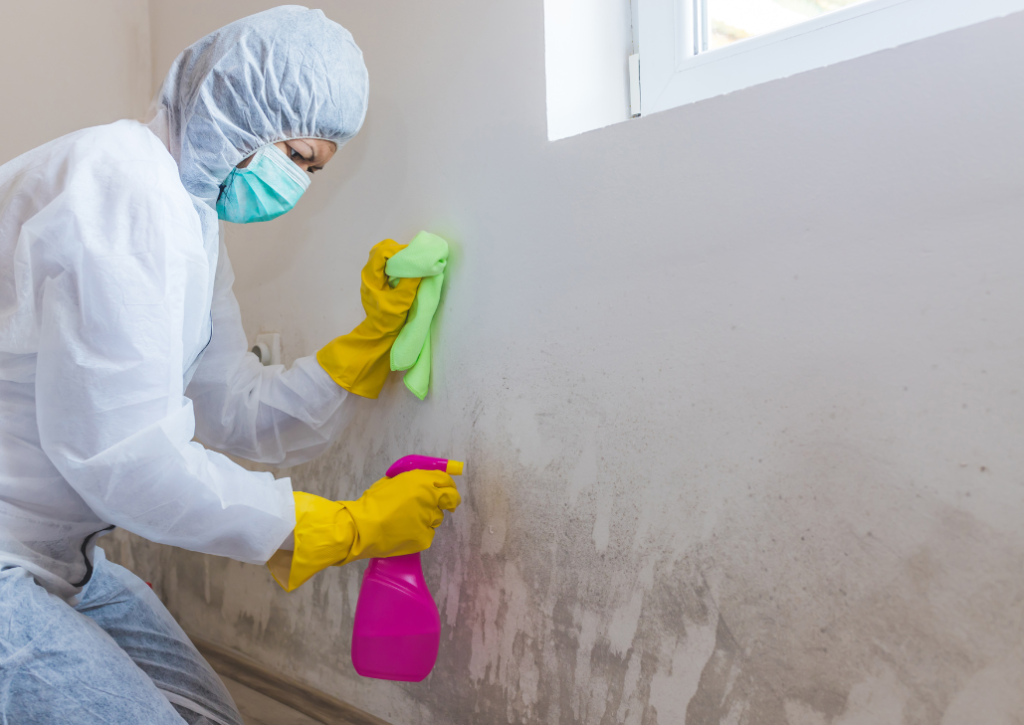
Professional remediation is non-negotiable when mold is detected in your home. This process involves repairing or replacing any structural materials that have been impacted by mold, along with the meticulous cleaning or disposal of household items affected. It is imperative not to attempt mold remediation without the guidance and oversight of a qualified Mold specialist. Improper remediation can potentially exacerbate mold growth and contribute to health issues.
Why Professional Oversight Matters:
Qualified Mold specialist bring expertise to the remediation process, ensuring that the steps taken are effective and safe. Attempting remediation without professional guidance may lead to unintended consequences, worsening the mold problem and risking adverse health effects. Trusting the expertise of a certified professional is essential for comprehensive and successful mold remediation.
Health Concerns and Seeking Medical Help:
If you suspect mold toxicity is affecting you or your loved ones, seeking medical help is paramount. Mold exposure can lead to a range of health issues, from respiratory problems to allergies and more. Consult with healthcare professionals who specialize in environmental health or toxicology to assess and address potential health impacts.
Immediate Action Steps:
1. Contact Professionals: Reach out to certified mold remediation experts to assess the extent of the issue and develop a remediation plan.
2. Avoid DIY Remediation: Resist the temptation to handle mold remediation on your own. Professional expertise ensures thorough and safe removal.
3. Health Evaluation: If mold-related health concerns arise, consult healthcare professionals promptly for a comprehensive evaluation and guidance.
4. Create a Remediation Plan: Work closely with your Mold remediation professionals to create a detailed plan for addressing and eliminating the mold issue.
5. Preventive Measures: Implement preventive measures to avoid future mold problems, including addressing any water leaks or moisture issues in your home.
Expert Tips for Mold Removal and Prevention:
1. Swift Action: Address any water leaks or damage promptly to prevent mold growth. Act swiftly to dry affected areas and replace damaged materials.
2. Ventilation: Ensure proper ventilation in your home to reduce humidity levels. Use exhaust fans in bathrooms and kitchens, and consider using dehumidifiers in damp areas.
3. Regular Inspections: Schedule regular inspections, especially in areas prone to moisture, such as basements, attics, and crawl spaces. Early detection can prevent extensive mold growth.
4. Professional Assistance: If you suspect mold or have a history of water damage, seek the expertise of certified mold inspectors. Professionals can conduct thorough assessments and provide effective remediation strategies.
Conclusion:
Discovering mold is a call to action for a healthier living space. By prioritizing professional remediation and seeking medical guidance when needed, you can effectively address mold issues and safeguard the well-being of your household. Remember, timely and informed actions lead to a safer and mold-free home.
Maintaining clean air in your home involves proactive measures, including mold inspection and testing. By staying informed about the process and seeking professional assistance when needed, you can ensure a healthy living environment for you and your loved ones. Prioritize the quality of your indoor air to promote overall well-being and a comfortable home.

